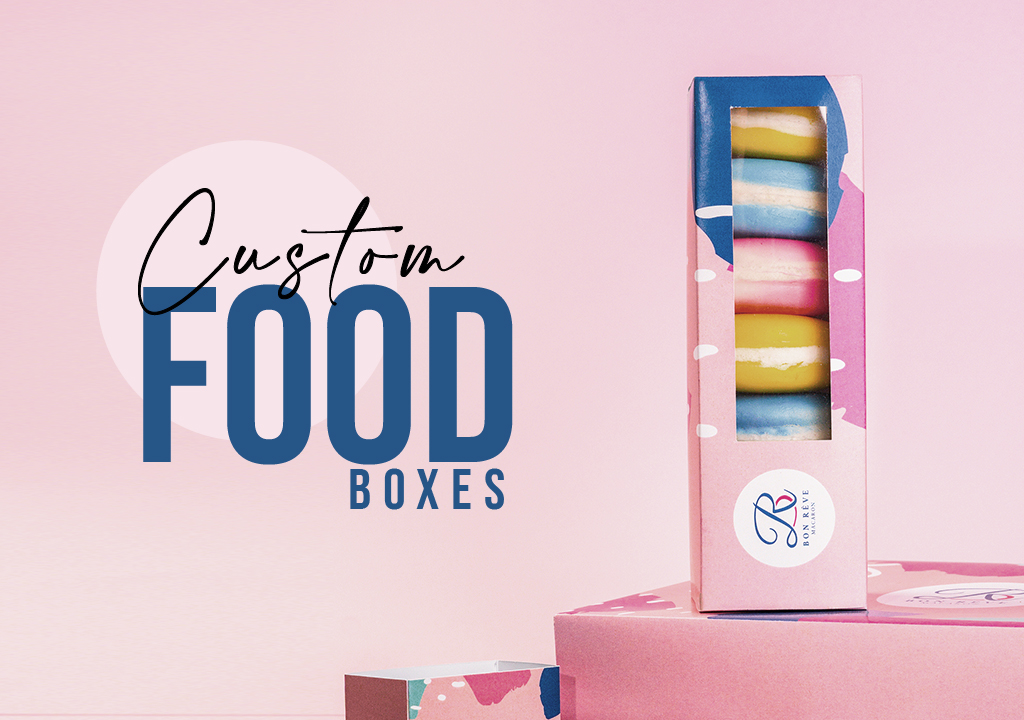Custom food boxes have been a popular trend for quite some time. There have been significant advancements in the packaging sector in terms of technologies utilized to efficiently and effectively design food labels.
Every producer must exercise extreme caution when it comes to packing. When printing food labels, certain standards must be in consideration. When a food consumer looks at the label on a can, package, or box, they always pick food. The products listed on the label include a wide range of items such as:
- The brand’s name
- List of ingredients
- A catchphrase or slogan
- Calorie content
- Dietary fibers, if any
- Food safety explanation
- Any additional sugars
- Saturated or trans fat
- Food serving: serving size, number of servings, or single serving
- Compliance explanation
- Daily consumption percentage statistics
- Expiry
Types of Surfaces You Are Printing On
The custom food boxes for business are a complex area in which companies use a wide range of materials in their manufacturing lines. The following are some of the most prevalent packing materials:
- Glass Aluminum Plastic Paper
- Various stiff materials
- Various flexible materials
This list includes both porous and non-porous substrates, a distinction that can have a significant impact on which printer is best suited to your needs.
You should also consider if any of your surface materials will be important. As is the case with packaged goods such as jam or pickles. These surfaces frequently necessitate the use of specialist print heads that can only be there for specific printer types.
Type of Ink You Require
When printing on custom food boxes, you must be very careful about the inks you use. After all, certain materials (for example, low-cost plastic) might be inconsistently manufactured, resulting in poor printing quality.
Fortunately, as ink chemists with decades of expertise, we can collaborate with you to decide which ink solution is most suited to your product’s requirements.
Among the possible alternatives are:
- Food-Grade Ink: Designed to meet the FDA’s Good Manufacturing Practices (GMP), this ink is safe for human consumption. This makes it ideal for encoding contact Custom packaging food, and it can even be used to print directly onto the food itself.
- Custom Ink Solutions: An on-site laboratory has been designing inks to meet the specific demands of the clients for many years. If you are dealing with difficult substrate issues, the pros can work with you to discover the best solution.
- HyperCook Ink: This ink is to encode metal cans and plastic pouches prior to retort, a food sterilization procedure in which the contents of the container are heated after they have been sealed within. This ink is distinguished by its ability to change color from green to blue in 19 minutes, as compared to the industry norm of 30 minutes.
Print Quality and Food Labeling
Food sells when the custom food boxes packaging piques the consumer’s interest. In other words, packing and labeling must appear good on the shelf. As a result, image quality is critical. In terms of print quality and accurate dot placement, the dry toner technique is suitable for food labeling.
It results in extremely dependable and uniform printing. Inkjet is less commonly employed since it is prone to dot placement mistakes, making it susceptible to differences between a drop’s desired location and its actual landing spot. Once again, a primer can help.
Taking everything into account, a dry toner digital press is without a doubt the finest alternative for individuals who wish to print food labels digitally while meeting market needs.
Food Compatibility
Food-grade inkjet printer printing is becoming increasingly common. Many companies are looking for methods to reduce costs while increasing production by printing on flexible custom food boxes packaging. However, most people are unsure if conventional printers will suffice. Knowing how your labels will fare in the packing process is an important part of printing your own.
Food is delicate and must be handled with care, so if you want it to last in custom food boxes packaging for consumers at home or in a shop, it must be able to withstand heat and cold without smudging—especially if they’re sealing metal containers (which may get hot) and plastic bags (which can get cold).
Migration And The Printing Of Food-Safe Digital Labels
Migration — the transfer of chemicals from packaging to packed foods – is a critical subject in the discussion of food safety. To assess the likelihood of chemicals migrating through packaging and contaminating food, migration thresholds are established.
The Specific Migration Limit (SML) is the maximum amount of a certain ingredient that may be discharged into food from a packing material or printed layer.
The Best Printing Method for Custom Food Boxes: Offset Printing
- “Retail” print quality for consumer items, such as custom food boxes, cosmetic boxes, and multi-media/electronics boxes
- Color gradients in graphics are smooth and undetectable (no banding), unlike in other methods of printing.
- High print quality is widespread, as is the use of more than four-color processes, i.e., four colors mixed with one or two PMS colors.
- Specialty coatings, such as matte soft-touch or super high gloss, might be for “greater perceived value.”
Common uses
- Containers that fold
- Labels (often referred to as litho labels)
The Bottom Line
So, when it comes to custom food boxes printing, there are no hard and fast laws. My goal here is just to assist you to understand the advantages and disadvantages of the various forms of printing used in packaging and how they might influence your decision when selecting a manufacturer.
However, because each manufacturer is unique, we hope this article has served as a solid beginning point for the future. More in-depth talks with your prospective manufacturers about what style of printing is appropriate for your package. Visit Multiple Packages and get custom boxes of your choice.
 +1(332)-233-6292
+1(332)-233-6292

